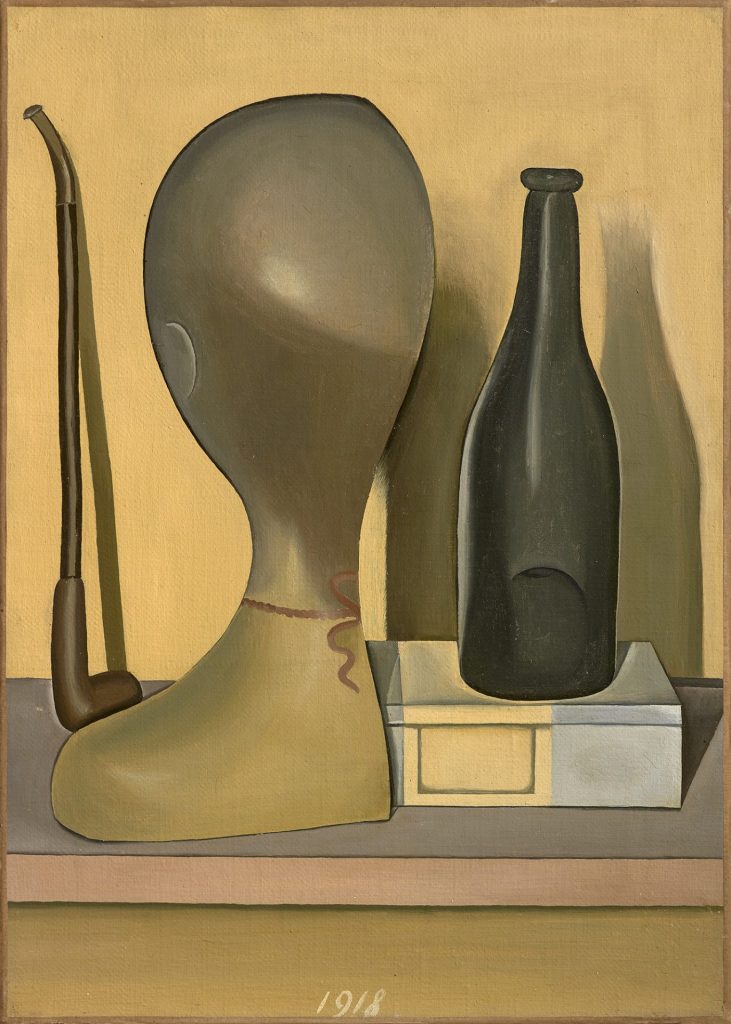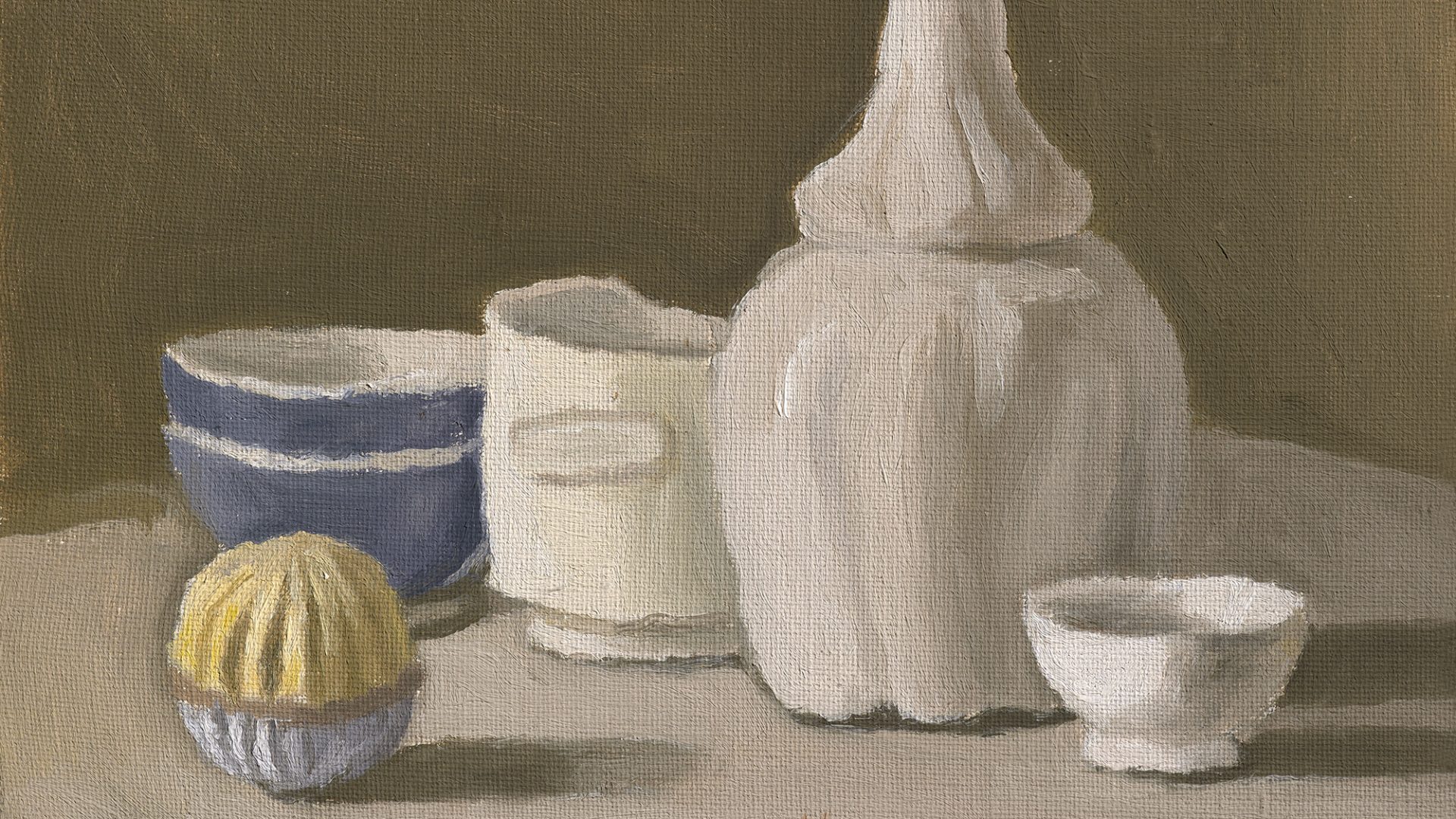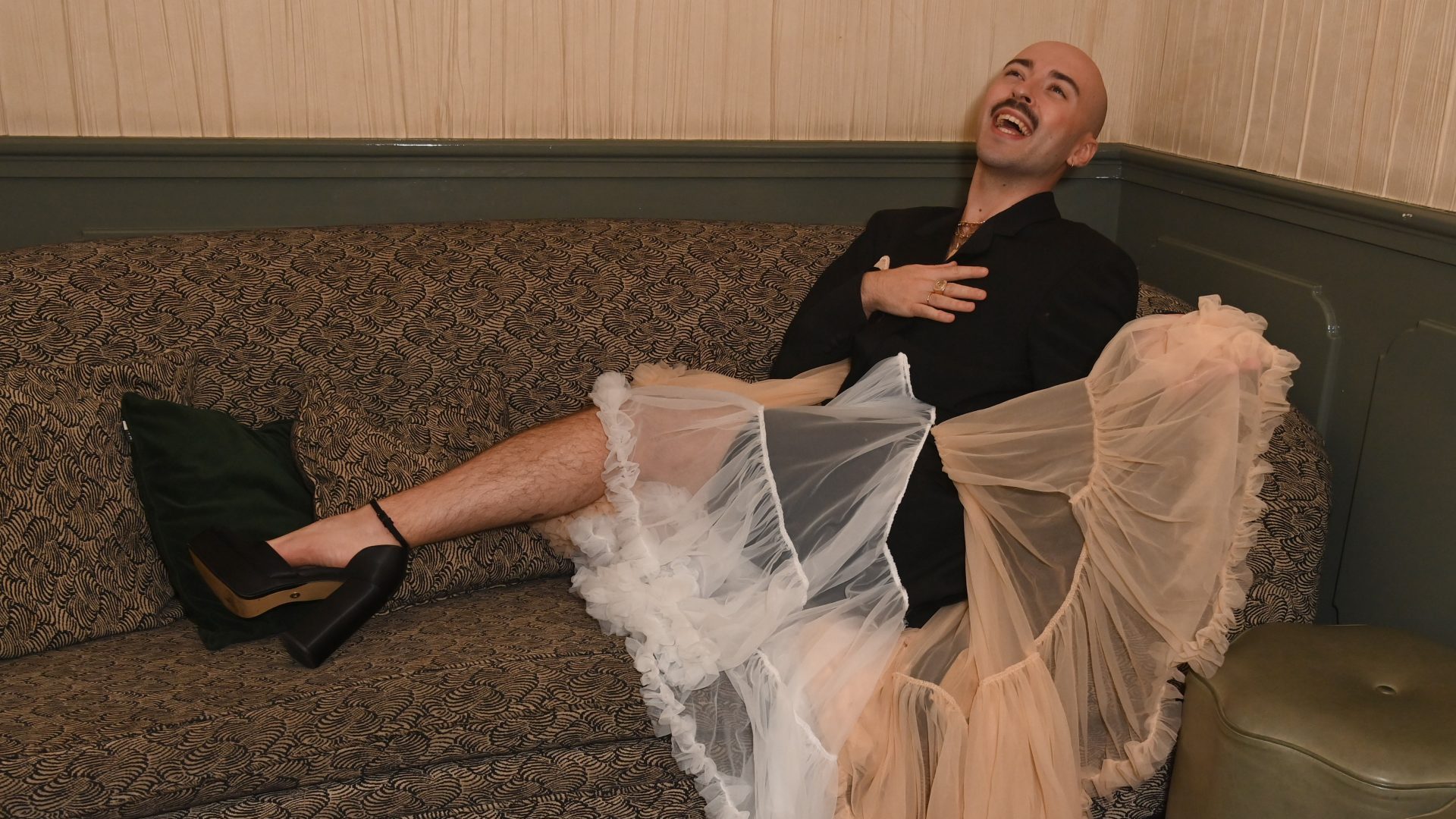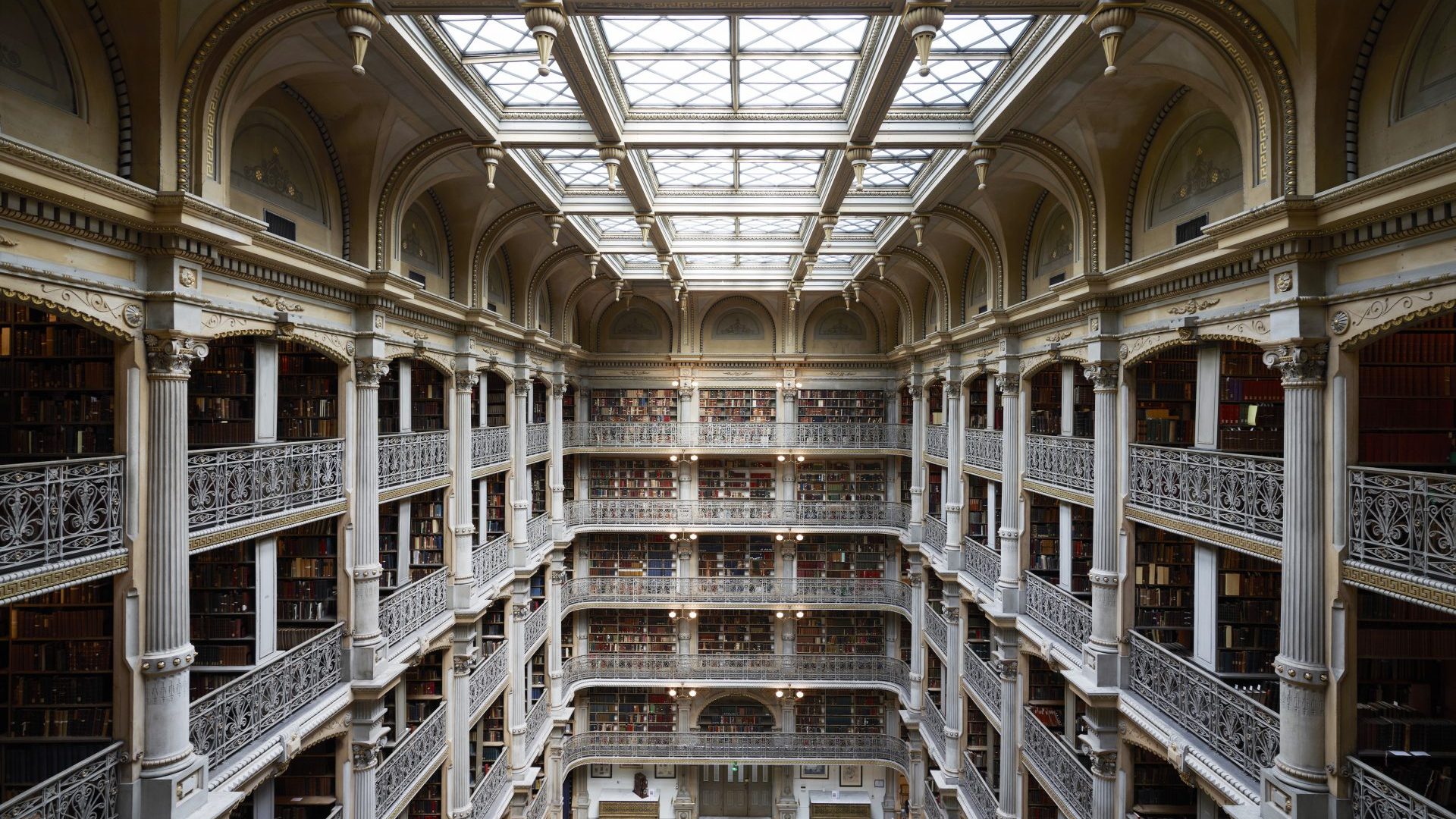The artist Giorgio Morandi once turned down the opportunity of showing his works in an exhibition because the organisers envisaged something altogether too showy for his taste. He rather tetchily declared they were trying to deprive him of “that tiny degree of quiet that is vital for my work”.
Quiet. If one had to find one word to sum up the paintings of the enigmatic artist, quiet would be on the shortlist.
He painted pots and vases, bottles and boxes arranged in an apparent disarray, in browns, blacks and greys, muted yellows and off-whites. Unemphatic, Beguiling. And now 50 of his works can be pored over – and
puzzled about – in an exhibition at the haven of Italian modern art, the Estorick Collection (until April 30), which has brought together the Morandi collection owned by the Magnani-Rocca Foundation, founded by the 20th-century art critic and entrepreneur Luigi Magnani.
So much of the work is a reflection of the artist himself. Morandi (1890-
1964) was born in Bologna, Italy, and there he stayed, venturing abroad only
twice. As he remarked: “One can travel the world and see nothing. To achieve understanding it is necessary not to see many things, but to look hard at what you do see.”
For many years he worked steadily – quietly – in his small studio, which was
also his bedroom in a flat shared with his three sisters and his mother. Known also as Il Monaco (The Monk) – perhaps unfairly because he was
perfectly sociable – he described himself as “a painter of the kind of … composition that communicates a sense of tranquility and privacy, moods which I have always valued above all”.
How do those moods as expressed in his still lifes hold our attention so profoundly? How did he evolve into this beguiling chronicler of the everyday?
In a speech for the opening of the Morandi Museum in Bologna in 1993,
the Italian writer Umberto Eco eloquently answered those questions: “How can you tell such different stories by depicting not a nativity or a storm at sea, a sunset on a lake or the birth of spring, but an array of objects from a junk shop? You have to love the world and the things that are in the world, even the humblest, the light and shadow gladdening or saddening them, and the very dust that chokes them.”
For Eco, Morandi achieved the peak of his spirituality by working as a “poet of matter”.
Like so many in the early 20th century, he was influenced by Monet, Seurat and Cézanne and also acknowledged the importance of the French 18th-century master of the still life, Jean Siméon Chardin.
Some argue that he was part of the Italian metaphysical school which flowered briefly under the inspiration of Giorgio de Chirico and the Futurist
and friend, Carlo Carrà, but Morandi insisted he never painted anything that he could not see with his own eyes.
“My own works of that time remain pure still life creations and never indicate any philosophical, surrealist, mental, or literary concerns at all,” he
said, though one highly stylised, De Chirico-esque, work in the show, Metaphysical Still Life (1918) is very much out of the movement’s playbook
Inevitably, he was affected by the political and cultural upheavals of Mussolini’s Italy. In the 1930s, he embraced the principles of the nationalist Strapaese (super country) group, which fitted well with the fascist agenda because, as one critic deemed, it embraced a style that “glorified Italy’s agrarian identity [and] extolled modesty and simplicity in art”. On the other hand, it is argued that his insistence on painting simple, unassuming objects was an ironic rejection of Il Duce’s grandiose vision.

But as the decade progressed he was developing his unique style. And his method. He had scant time for the Abstract Expressionists such as Jackson Pollock, who he reckoned “just jumps in before he knows how to swim”, and instead would spend days in his cramped workplace arranging his objects before lifting a brush.
American art historian John Rewald recalled how the studio was covered in a “dense, grey, velvety dust, like a soft coat of felt, its colour and texture seemingly providing the unifying element for these tall boxes and deep bowls, old pitchers and coffee pots, quaint vases and tin boxes bought from second-hand shops”.
Morandi would get very cross if his sisters came dusting, and worse, moved his objects around after all the time he had spent setting them up.
Often, he would begin by tracing the outline of the objects on the tabletop surface before experimenting with various screens to control the fall of light and shade. He would sometimes even make an outline of his own feet to indicate where he should stand on the studio floor to avoid any distortions or inconsistencies as he worked.
“And yet still I often go wrong with the spaces,” he once said. “Perhaps I work too fast.” Indeed, when it came to the actual painting he was as speedy as Pollock, the great proponent of action painting.
This obsession with detail and the constant honing of the same subject in the pursuit of a perfection that is never achieved, puts him in the tradition of other “serial” artists such as Claude Monet with his lilies, Alberto Giacometti, whose search for a kind of reality manifested itself in his skeletal sculptures, Jasper Johns and flags and the interminable dots of Yayoi Kusuma, all of whom seized on the same theme in their quest to investigate the universe in the simplest of images.
A sense of his single-minded determination to do things his way came with an embarrassing request from Luigi Magnani to paint his old Venetian flute and other precious musical instruments. Magnani was not only one of the artist’s most prominent patrons but a close personal friend so Morandi reluctantly agreed to the commission but substituted a toy guitar, a tiny trumpet he had bought from a flea market and an old mandolin.
As the finished work, Musical Instruments (1941) proved, Morandi would not paint subjects that were alien to him. His shabby bits and pieces were where he found inspiration, not fancy flutes.
The way in which the exhibition is laid out chronologically makes it easier to trace Morandi’s development, starting with an unusual self-portrait (1925), which confirms the impression of the few photographs of him as being a tad defensive, even somewhat grumpy. Another early work, Still Life with Fruit (1927) appears to owe its inspiration to Cézanne but with its rather stolid composition lacks the lustre of the master.
But by the 1930s the familiar clusters of those dusty objects have become the norm. Deep shadows stretch across the tables from the vases and bottles, boxes and jugs in dark hues of brown and black, sombre ochre and tenebrous reds. The curves on the tall vases are reminiscent perhaps of the two leaning towers which rise precariously over Bologna.
Within a few years, one can see how his palate has lightened with soft beiges, gentle ochres and pale browns while the imagery has become increasingly simplified and softened. The background is less evident; the
table loses it sharp, defining, edge with the result that the objects seem to
float – to the point that sometimes it is hard to tell whether there is space in
between the objects or whether one bottle is in front of another or alongside it. The more you look at still lifes from 1948 and 1949, for example, it is possible to discern in the ethereal quality of the objects Morandi’s progression towards abstraction.
The sensibility found in the representation of the objects is reflected in his landscapes. He and his family owned a house in the hills outside Bologna, but one of the most eye-catching paintings is from the window of his city house – The Courtyard on Via Fondazza (1954) – in which he boldly leaves half the view hidden by the house’s interior wall. It is as if he refuses to move an inch from where he is standing to get a complete look at the courtyard. Instead, he lets the wall bisect the view of the houses beyond, which themselves, with their perpendicular shapes, resemble the vases, bottles and boxes of his still lifes.
The show includes a fine collection of etchings, as one might expect from the man who was a professor of that art form at the Accademia di Belle Arti
in Bologna, which bring a heightened intensity to the familiar themes. These
are dense, dark works, leavened only by the way Morandi allows the white of the paper to contrast with the density of the ink
Towards the end of his life, in 1964, his works were stripped back to their bare essence. His pencil drawings are simple to the point of abstraction as
are the minimalist paintings in which his objects float ambiguously without
the context of table and wall of his early work.
The New York Times described the works as existing on the “precipice of abstraction” – a nifty turn of phrase that celebrated the mysterious quality
which imbued the later paintings but failed to recognise that the alchemy of
his second-hand bits and bobs remained rooted in his dusty studio.
As he insisted in an interview in 1955: “I think there is nothing more surreal, nothing more abstract than the real.”
Giorgio Morandi, Masterpieces from the Magnani-Rocca Foundation. Estorick Collection of Modern Italian Art, London, N16, until 30 April 2023




